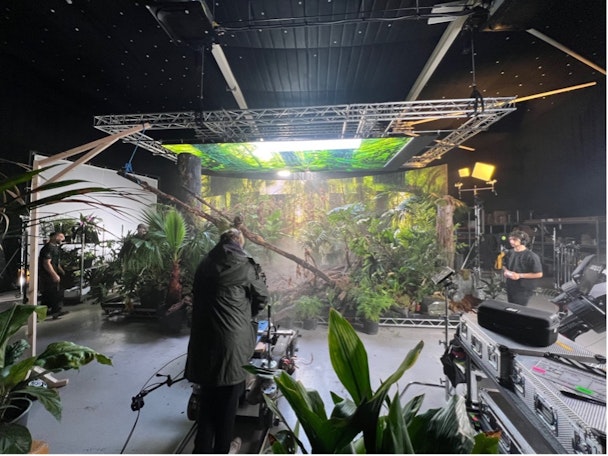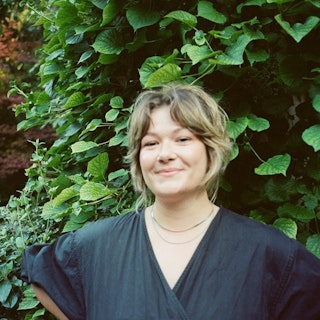‘A big dose of flexibility’: why more CMOs will tap into virtual production this year
As agencies battle to keep costs down while still hitting their ESG targets, virtually produced ads allow creativity to flourish while keeping carbon emissions low.

AMV BBDO's recent campaign for Bupa was produced remotely / AMV BBDO
Fabrice Beaulieu, chief marketing officer at Reckitt recently told The Drum that creativity was being brought to life through new production models, like virtual studios. “Mostly, because they cost less if you know what you are doing, and because they emit less carbon,” he said.
Virtual production (VP) really came into its own during the pandemic, as creatives across the world had to find ways of executing high-quality campaigns at a distance. Using a mixture of physical and virtual filming techniques, VP studios use 3D engines to create realistic sets, that can then be displayed on LED walls behind physical sets.
Advertisement
But VP also leaves room for agencies to execute big ideas that budgets just wouldn’t accommodate in the real world, explains Mark Graeme, executive producer and head of Flare Productions at AMV BBDO.
“In our Currys ‘No Questions Unanswered’ work, for example, we have fantastical cut-aways where we may be in a Japanese technological lab one moment, up a mountain in Yosemite or in a sports stadium the next. Sustainability aside, that simply isn’t practical to be shooting on location, often for a short sequence, so VP gives creatives, producers and brands a big dose of flexibility.”
Advertisement
Moreover, virtually produced ads can be more cost-effective. Although as Leila Bartlam, chief production officer at Accenture Song Production Studios tells The Drum, “every idea is unique and the amount of time, money and creative ambition attached to a project varies considerably. We are seeing around a 20% saving, but in some cases, it can be more expensive.
“For example, the visuals used on the LED screens can be more sophisticated or complex to build and therefore more expensive, yet at the same time, they may allow us time savings, carbon savings and a greater creative output.”
Suggested newsletters for you
The amount of carbon cut by producing ads remotely is a huge incentive for brands and agencies looking to minimize their environmental impact, while still going large on creativity.
For example, AMV BBDO's recently virtually produced ad for Bupa, resulted in 95% less carbon emitted when compared with filming on location. The studio it used ran on clean fuels and LED lighting. On its completion, 3.97 metric tons of CO2 had been produced, compared with the estimated 121.53 metric tons that would have been produced if shot traditionally and on location, with Bupa saying these emissions were calculated using Ad Net Green.
“Compared to the on-location carbon footprint equivalent (especially exaggerated if that location involves flights), VP is a much greener alternative. With VP studios running on 100% renewable energy sources for the LED walls and lighting, plus local kit, catering, and production design partners, you’re approaching sustainable production in the right way – reducing your footprint and emissions first (without compromising on creative quality), then offsetting any minor elements remaining,” explains Graeme.
Crucially, VP studios emphasize to The Drum that developing ads in this way doesn’t have any impact on creativity.
“The best time I have had on a VP set is when the director yelled ‘can you move the sun please!’ It was like all my production dreams come true,” says Bartlam.
“We shot during magic hour for the whole day and actually moved mountains. A magic hour shot is usually a high-stress fleeting moment during which you may or may not get lucky. [VP] is an incredible tool that helps us balance all of these considerations and challenges just like any other production tool.”
Plus, “having a fully controllable background and environment, carrying any image you can imagine in full 12k resolution, should be a creative and production playground to embrace,” adds Graeme.
“Yes, there are limitations and techniques to ensure the viewer believes your storytelling, but that has been true of theatre, cinema, and filmmaking since day dot.”
As marketers are having to look at the entire production and value chain of an ad campaign, they are reckoning with the urgent need to minimize emissions wherever possible.
Amid the cost-of-living crisis, VP is just one way in which they can minimize production costs to keep competitive, while also ensuring they are keeping their Scope 1 and 2 emissions as low as possible.

